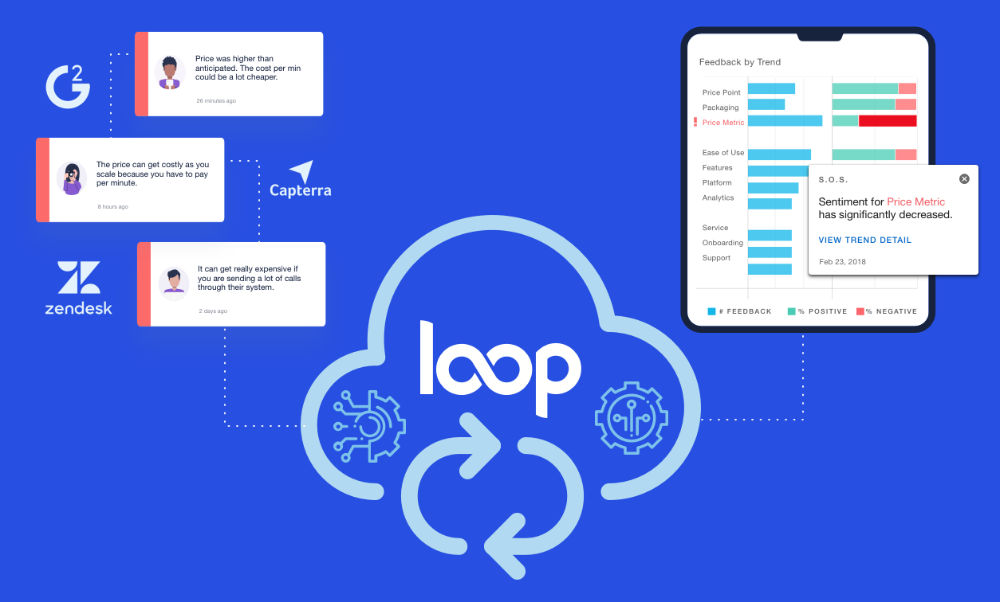Home » 4 Lessons on Starting a Voice of Customer Meeting at Your Organization
4 Lessons on Starting a Voice of Customer Meeting at Your Organization
Madeline Turner

Marketers have a habit of losing touch with customers.
In an effort to drive demand and build pipeline, marketers tend to place their bets on new business rather than existing customers.
According to Jeanne Hopkins, CRO of SquadLocker, this means that we’re often leaving money on the table.
[Watch the full interview with Jeanne here]
“I’d place my bets on trying to grow your existing business with your existing customers. I wouldn’t be spending 95% of my budget trying to bring in prospects. I’d deploy the sales organization to say, “How can we help our customers use our product better?”
Jeanne isn’t alone in this thinking. It’s been a big topic in conversations we’ve had with B2B SaaS leaders over recent weeks. But staying connected with customers requires more than just a survey. Connections are fueled by conversations.
Acting on this—truly putting customers at the center of what you do— is challenging due to the inherent friction that comes when you have to work across functions.
This is why Jeanne says that Customer Success + Customer Marketing = A Better Customer Experience
“With 65% of people saying they find the CX more important than even price, it’s safe to say that competing on experience makes marketing sense. In fact, brands who report moderate to high revenue from customer marketing efforts are 45% more likely to report their customers to rate their experience with them as satisfying or very satisfying.” – Jeanne Hopkins, CRO, SquadLocker
To ensure that teams are working together and on the same page about customer priorities, Jeanne has instituted a VOC program at SquadLocker.
We have direct and indirect feedback channels — and a quarter of a million customers — but this feedback wasn’t being shared out in a consistent way. We had our first Voice of Customer meeting a couple of weeks ago. With this meeting and LoopVOC software, I feel like we’re going to get places. – Jeanne Hopkins, CRO, SquadLocker
4 Lessons on Starting a Voice of Customer Meeting at Your Organization:
Get Executive Buy-In
This falls apart if you don’t have executive buy-in. If leadership is not committed to keeping customers central to business decisions, successful VOC programs and cross-functional collaboration are not possible.
Jeanne has made it a point to include founders and CEOs in VOC meetings so that they can see the impact of getting on the same page in the same room. And it works.
Across her experiences at Hubspot, Lola, and SquadLocker, VOC meetings have been leadership’s favorite meeting. When leadership can see how teams are working together to drive growth based on customer feedback, it’s an obvious win-win.
Getting this buy-in isn’t always easy. Here are a few steps you can take to get the support and resources you need:
- Find a cross-functional partner: When CS comes together with Marketing or Sales, the partnership can be powerful. Now, it’s not just a departmental initiative. Once you identify a partner, your story becomes about the ways teams can make faster, more informed decisions for the customer.
- Make VOC about ROI: Your program isn’t just a feel-good initiative. This is about driving measurable results for your business and your customers. Talk about VOC from the perspective of results: customer retention, lifetime value, closed/won deals, and product roadmap.
- Bring examples: Do work upfront to uncover major customer feedback trends that have been left unaddressed that are impacting business growth. Use these insights to point to the opportunity that’s been left on the table.
Get cross-functional leaders aligned
The point of bringing cross-functional teams together to understand feedback coming from direct and indirect feedback channels is to get everyone on the same page.
Jeanne focuses the meetings on understanding the three reasons people buy and the three reasons people don’t buy. This is important because teams need to come at it from “a common set of expectations, in turn for your common set of deliverables.”
This is the connective tissue across teams. Instead of teams making siloed decisions about what to build or what to take to market or how to best help customers, everyone is operating from a common understanding of what needs to get done.
Every team is running its own VOC channel — from frontline conversations to NPS or CSAT surveys. Alone, these channels only tell a piece of the story. Together, cross-functional teams can align around a comprehensive understanding of customer needs.
One of the hardest parts about aligning cross-function teams around customer feedback is ensuring that the culture is set for uncovering insights rather than defending decisions. Before starting VOC meetings, take a few steps to set the tone:
- This is about understanding where we’re falling short: It’s our nature to hide what’s in the closet. We’re programmed to drive results and it’s difficult to hear that it’s your department or process that needs to make a change. Make sure that everyone is bought-in to the idea that the customer experience is everyone’s responsibility. This isn’t about calling teams out. It’s about making better decisions with new insights.
- Commit to acting and measuring: The meeting alone is not going to drive growth or enhance the customer experience. Cross-functional leaders have to commit to taking action from these meetings. What changes will be made and how will those changes be measured against customer feedback over time?
- Use customer feedback to boost morale: Celebrate your strengths. If customers say that your team goes above and beyond with customer support – celebrate this! And then determine what lessons you can learn about what’s going well and where customers are placing the most value to drive continuous improvement across the organization.
Bring the data together
If we’re operating from different hypotheses, there will inevitably be conflict. Debate is healthy, but if you’re debating data because you’re not looking at the feedback collectively, you’re wasting time.
Create a process of collecting feedback data across channels and bringing it together in one place. This allows you to identify trends across the customer journey rather than to look solely at specific touchpoints.
As you bring the data together, use this as an opportunity to take inventory of all of the ways you’re engaging with customers and asking for feedback. Is every survey necessary? Or are there ways that teams can combine their survey to ensure that customers are not getting fatigued?
- Look at your internal and external data sources: Understand all of the places your customers are already sharing feedback with you on a daily basis. Create the process for harnessing this data (chat support or win/loss notes) in a meaningful way. Too often, conversations that we’re having with customers on a daily basis get overlooked. Every conversation is an opportunity to learn.
- Empower your frontline teams: Create a framework and process to help frontline teams across Sales and CS to both gather feedback and share that feedback. Ensure that teams are tagging data so that reports can be pulled based on the feedback that matters. Don’t assume that just because they’re having conversations that this information is being recorded.
- Assign Topics and Sentiment to Uncover Insights: As you measure feedback across data sources, you’ll need a standardized method to tag each individual piece of feedback. Keep topics high-level (like “support” or “pricing”) and then create more granular topics within those primary topics as needed. [Loop can help do this for you automatically – get started with your free trial here].
Stay focused on your customers
We talk a lot about how much our customers matter to us. But this feeling doesn’t always translate to how we support our customers. We have to treat our customers like they’re the most important thing to us.
Starting a VOC program is your chance to empower your purpose with process.
Your NPS survey is not enough. Creating compelling experiences and driving customer satisfaction will require deep understanding and quick action. Most companies mean well, but few companies are doing this well.
The processes that you create internally will have a direct impact on the customer experience externally. Use this VOC meeting to draw a line in the sand — from this point forward, we’ll do what makes sense.
- Listen to customers deeply
- Identify trends early
- Make changes quickly
- Have conversations and follow-up with results
It’s not rocket science, but sometimes the biggest problems require simple solutions.



